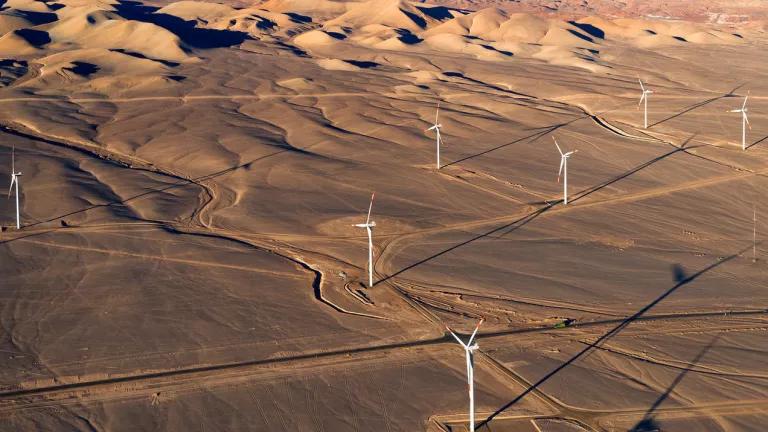Latin America Can Be a Climate Leader with Better Land Use
One climate priority where Latin America can and must make critical progress and show leadership is land use.

Latin America is one of the most vulnerable regions to the impacts of climate change, but it is also uniquely positioned to advance the types of solutions needed to combat the climate crisis. This week, over 5,000 participants from the region’s public and private sectors, civil society and academia are gathered in Salvador, Brazil for Latin America & Caribbean Climate Week (LACC Week) to help raise ambition for climate action in the region. One climate priority where Latin America can and must make critical progress and show leadership is land use.
Improving land use practices is critical for Latin America’s future
As participants at LACC Week meet in Salvador, forest fires are raging in the Brazilian states of Rondonia and Amazonas. On Monday, the smoke from thousands of active fires darkened the afternoon skies of Sao Paolo, nearly 3,000 kilometers away. Researchers at Brazil’s National Institute for Space Research (INPE) have used satellite imagery to document 74,155 wildfires in the country this year, a jump of 84% over the previous year. The fires in the Amazon are the result of a combination of factors: more frequent and severe droughts, deforestation and climate change. INPE has also documented over 57,000 additional fires just in Venezuela, Bolivia and Colombia.
Elsewhere in Latin America, unsustainable land use practices are threatening other critical ecosystems. Mexico’s Chihuahan grasslands, one of the most biodiverse arid regions in the world and also an important carbon sink, are undergoing a radical transformation caused by the rapid expansion of cropland and cattle overgrazing. In some areas, these grasslands could disappear entirely by 2025 unless the trend is reverted. Here too extended droughts brought on by a changing climate are exacerbating the situation. Wetlands across the region are also at risk. A UN Environment report estimates that Latin America and the Caribbean has lost 59% of its natural wetlands, more than any other region in the world. These ecosystems, which are critical for both carbon mitigation and the resilience of coastal communities, are at risk from poorly planned coastal development, overfishing and sedimentation among other reasons.
The Intergovernmental Panel on Climate Change’s recent Special Report on Climate Change and Land Use was a stark warning that current land-use practices, including unsustainable agriculture and deforestation, are contributing to the climate crisis. And in turn, the changing climate is putting even further pressure and reducing the productivity of increasingly degraded lands. This vicious cycle contributes to food insecurity, intensifies water scarcity and threatens the livelihoods of millions of people in Latin America who depend on the land. The potential consequences for Latin America are dire. With the migration crisis in Central America, we are already witnessing the difficult choices people make when the land can no longer sustain them.
Latin America’s position as a major producer and exporter of agricultural commodities means it must be proactive in seeking land use solutions to the climate crisis. A recent report from OECD/FAO forecasts that, over the next ten years, production of crops and livestock will grow faster in Latin America and the Caribbean than the global average. The report also predicts the region will account for over a quarter of global agricultural and fisheries exports by 2028. The increased agricultural output will be in part attributable to improved crop yields. However, a previous report by OECD/FAO noted that the total area of land used for agriculture would need to increase by 11 million hectares by 2027, primarily for soy bean cultivation.
The IPCC report and the smoke-filled skies of Sao Paolo are just the latest alarm bells for government and business leaders in the region. Indiscriminately clearing forests, converting grasslands and paving over wetlands will not secure long-term prosperity and progress. Instead, continuing these practices will increase the risks to the region’s water resources, food security, economic output and the very health of its citizens.
Latin America must show renewed leadership on climate action
Reverting the climate crisis will require concerted action across the globe on many fronts. A transition to cleaner energy and transportation systems to drastically reduce fossil fuel emissions is critical. Rapidly scaling up private investment in climate solutions is also key. Countries in Latin America are taking important steps on these areas from Colombia’s advances with green bonds to Chile’s proven clean energy revolution and now it’s emerging electromobility revolution. All this must continue to expand.
But the fundamental transformation in how food is produced and how lands and waters (marine and terrestrial) are managed is an area that Latin America is uniquely situated to lead on. It is urgent to halt further deforestation and desertification in the tropics, restore natural ecosystems, ensure that protected areas and working landscapes are well managed, and in some cases extend protections even further—in line with scientists’ call for 30% of land and oceans to be protected by 2030.

Photo credit: NRCS Oregon
LACC Week will be followed by PreCOP25 in Costa Rica in October and later by COP25 in Chile in December. The fact that Latin America is once more hosting the climate negotiations makes this a critical moment for the region’s public and private sector leaders to show their willingness to drive forward ambitious climate action and counterbalance the voices—like Bolsonaro in Brazil and Trump in the US—that seek to shirk the shared responsibility of protecting our climate by pointing fingers elsewhere.




